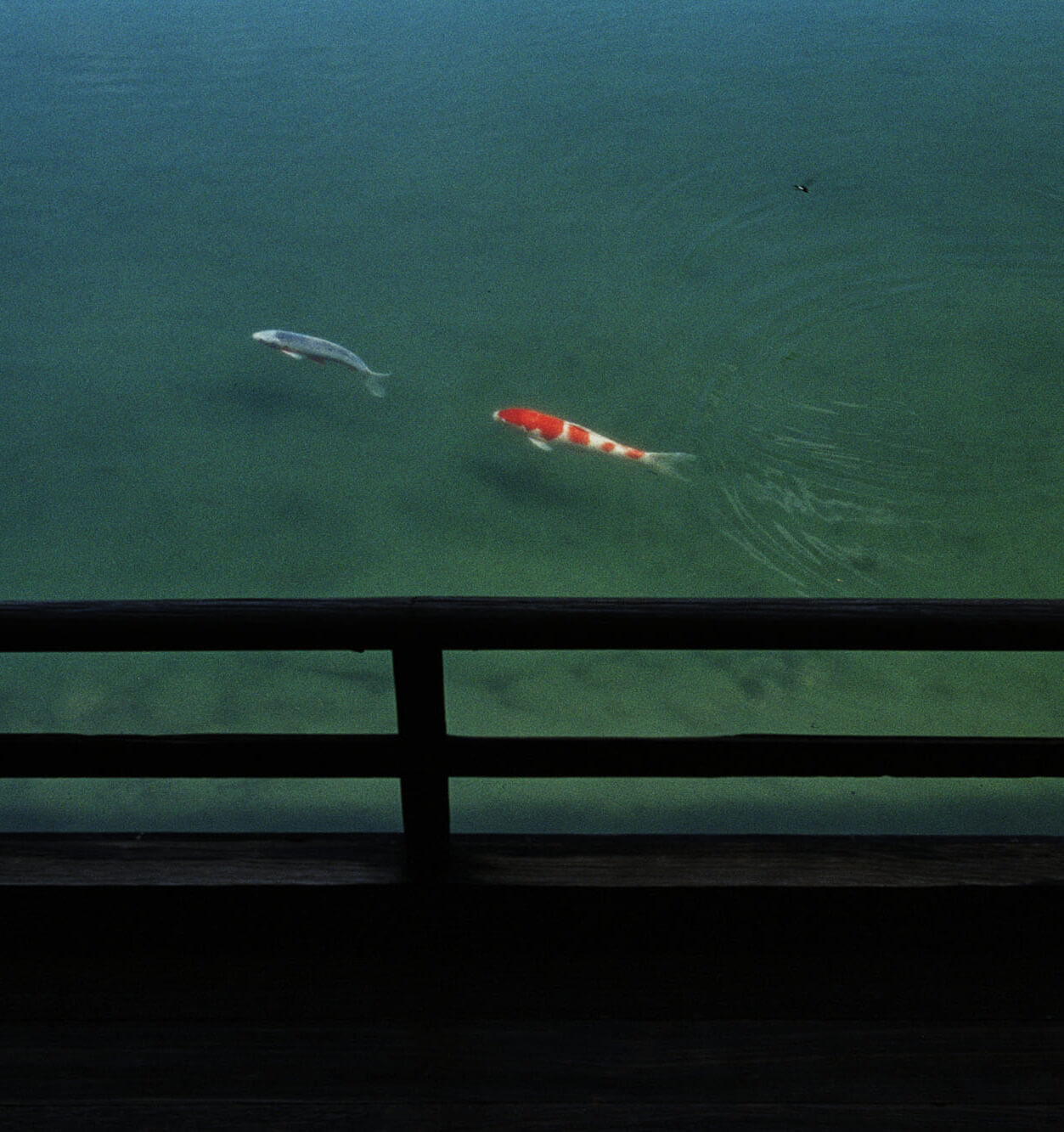DUO’S JOURNEY
Kagawa Ritsurin Garden
Ritsurin Garden was a residence of the Matsudaira family, the lords of the Takamatsu domain, until the Meiji Restoration. It was opened to the public as a prefectural park in 1875. The total area of the garden is about 162,000 square meters, or about 750,000 square meters if you include the shakkei of Mount Shiun. The vast site is divided into the North Garden and the South Garden, and the current highlight is the well-maintained South Garden. A teahouse called Kikugetsu-tei faces a pond called Nan-ko, and the view of Nan-ko pond from the teahouse is truly magnificent. It is designated as a Special Place of Scenic Beauty by the national government.
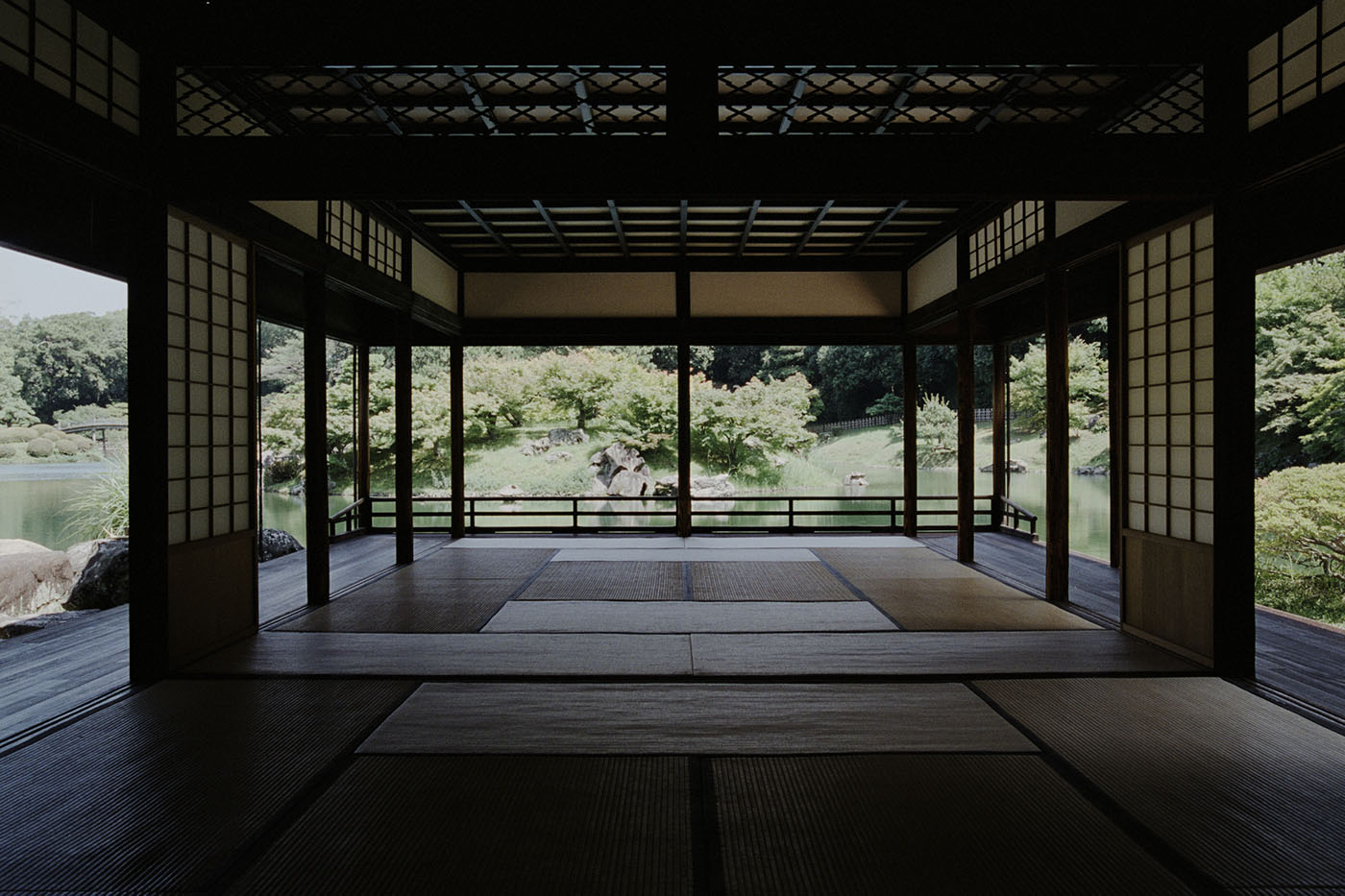
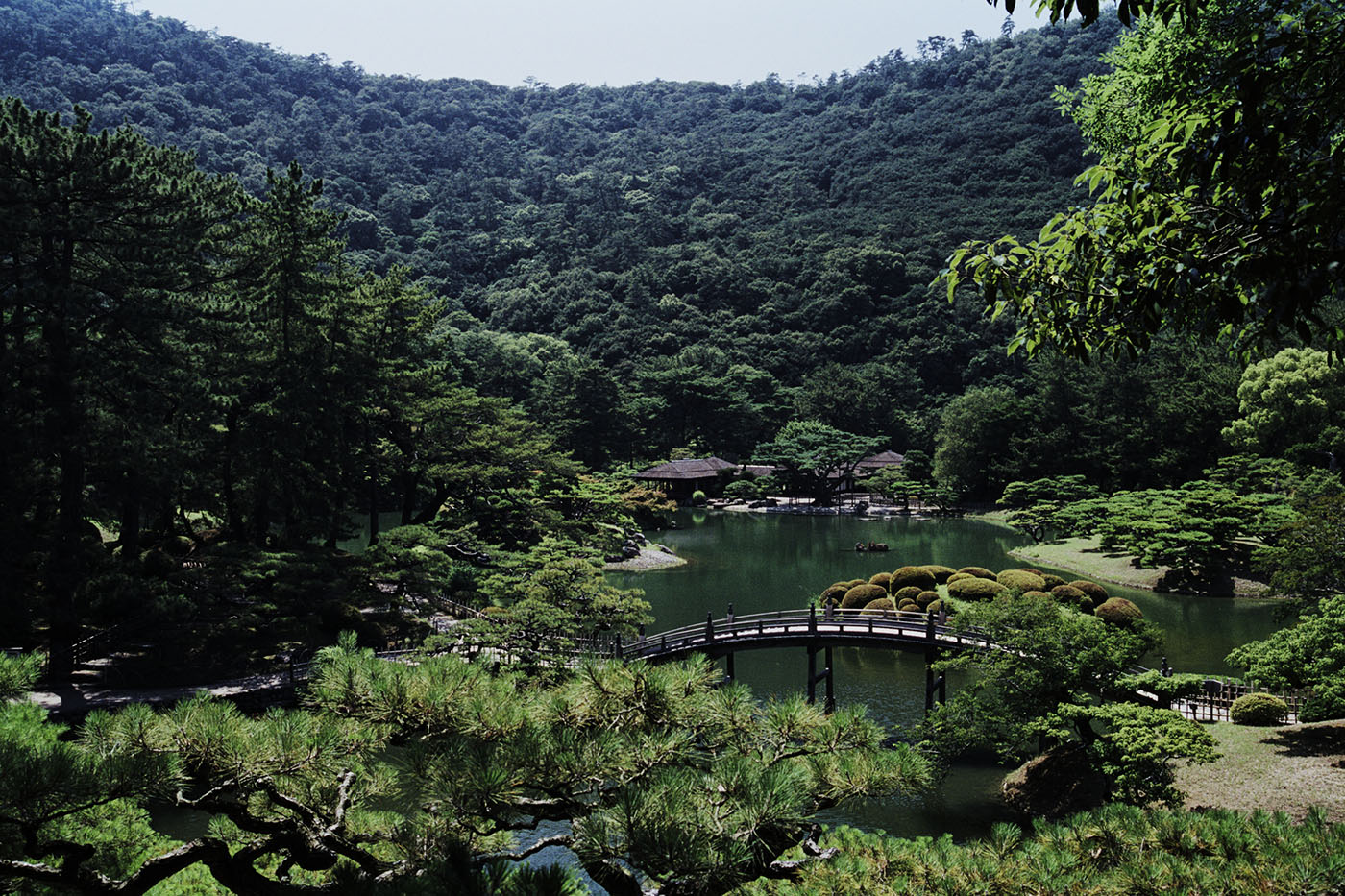
Yamaguchi:
In Ritsurin Garden, there is a straightforward shakkei, or background, right there. There is a pond, Japanese architecture jutting out from the pond, and a kind of hill for viewing. The place is famous for its composition. It almost looks like the Shangri-La. The mountains in Kyoto tended to be quite distant, but I thought we might be able to capture a shakkei within closer quarters here. However, I had already noticed that it was difficult to tell whether the mountain was just a background or an intentional shakkei, and what the difference even was. I already knew that we wouldn’t be able to photograph it. On the other hand, Mr. Kumon was interested in the pine trees, which I didn’t quite care for.
Kumon:
The pines were all very cool. When I was taking pictures thinking they were cool, Mr. Yamaguchi didn't seem to be interested in them and just commented, "I hear the pines are famous.” I’m used to the way this guy is, though.
Yamaguchi:
As I walked around, though, there was an element of neighboring textures. When I arrived at this building, I found one of the most beautiful landscapes I have ever seen. Whenever I go to Ritsurin Garden, I take a picture of this place. It is best to sit or stand right here and take a picture directly in front of it. This made things difficult for Mr. Kumon since the set viewpoint makes it so that anybody can take the same image.
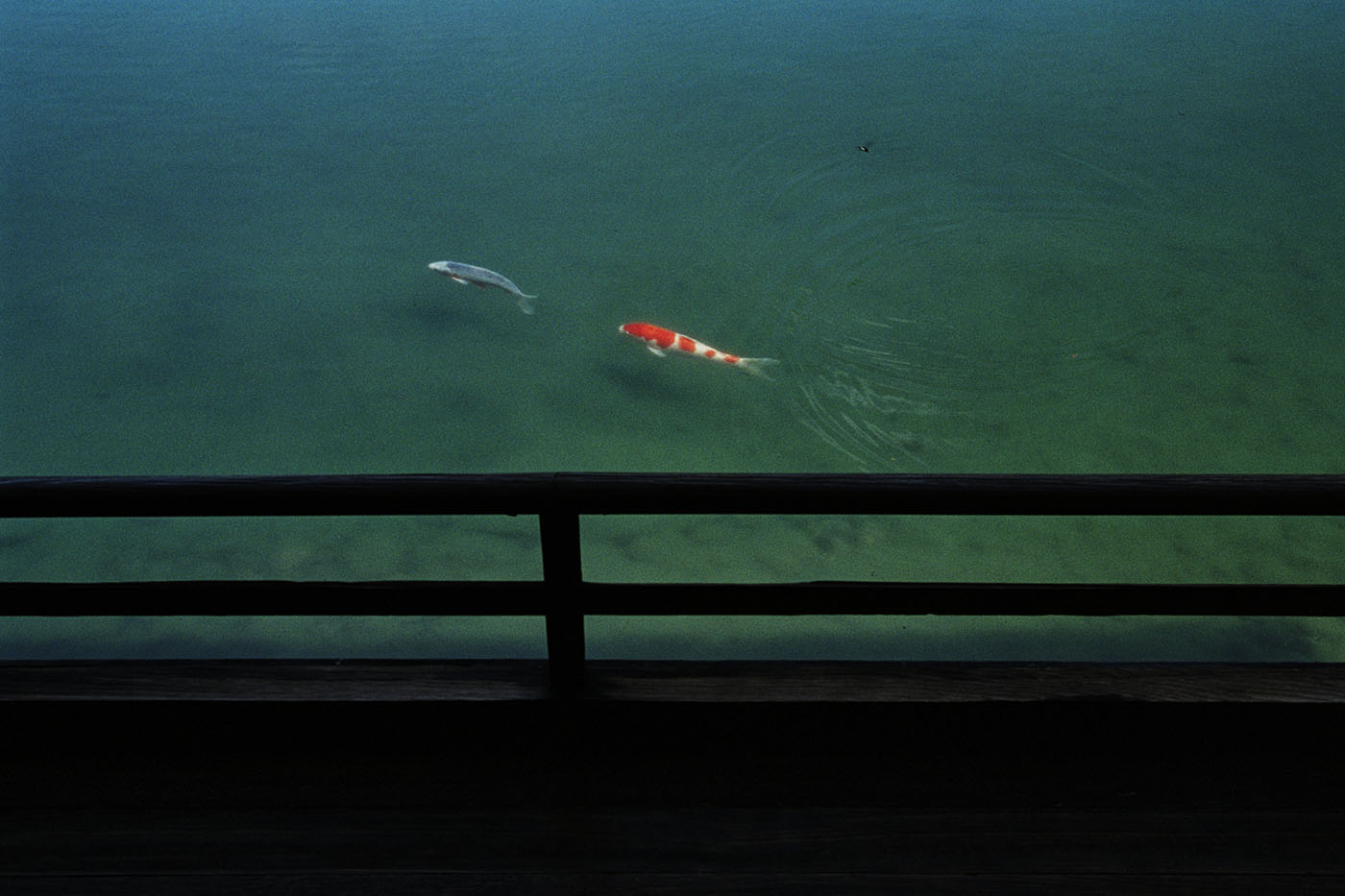
Kumon:
Mr. Yamaguchi said it was one of the most amazing places in the world, so I went there with high expectations, but there was no way to capture it. The world on the outside was amazing. It was obvious that architecture and nature were one. But then the photos kept being dragged by the image of Shangri-La, no matter how or from where I photographed them. So, you can see the Shangri-La captured in this photo of koi. It was like I was in a dream, and I felt the most connected to it.
Yamaguchi:
I was convinced that those were neighboring textures in the sense that the two places, the pond and the interior of the building, were adjacent to each other. Mr. Kumon told me this. When I first went to Ritsurin Garden, I thought that the artificial hill in the back of the garden might be a shakkei, but it became difficult to understand the relationship between the two. Around this time, we started to take more and more close-up photos. Mr. Kumon also cut out the fact that the areas were next to each other. At that time, we had already taken the stance that if we travel somewhere, we would surely make a discovery.
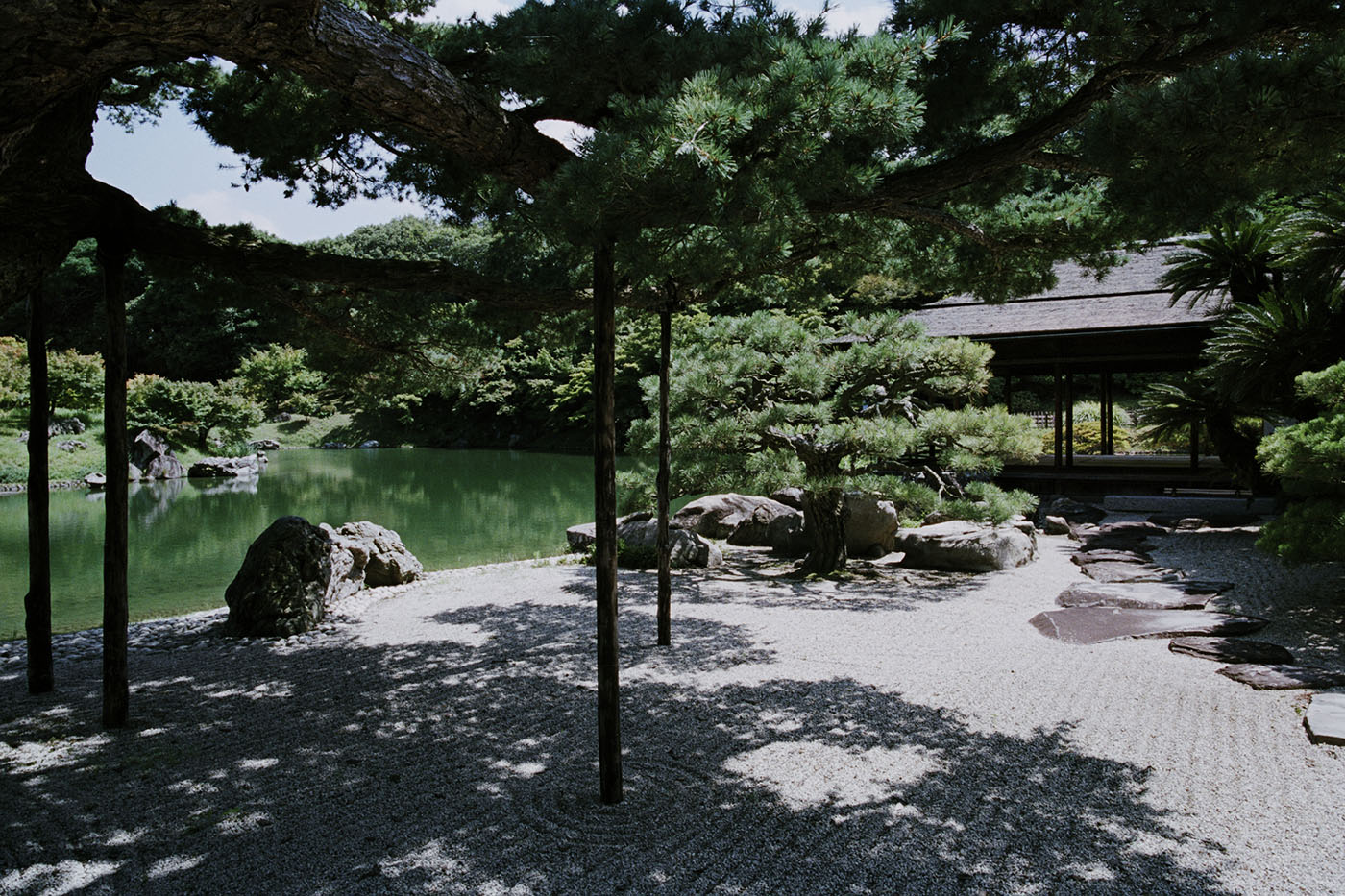
Yamaguchi:
The pillars of the building protruding into the pond seem to be independent, but there is a similarity between that image and the woods supporting the pine branches. Mr. Kumon cut out neighboring similar materials. He was already aware then.
You're renewing your consciousness throughout the process of traveling.
Kumon:
I feel that it has been updated through experience, through the accumulation of experiences. I think it all started as an extension of our Japanese sense of beauty.
Yamaguchi:
In the case of this photo, I feel that it lacks consistency. It's a little different from being unable to see the purpose. In the case of Katsura-rikyu, all it was that I couldn’t find a clear purpose, whereas in this case, similar things were just placed next to each other as a result. In that sense, it is similar to the traffic cones at the entrance to Hama-rikyu, which I think is what Mr. Kumon discovered. That's because he and I see things differently. And that's why it's always interesting.
